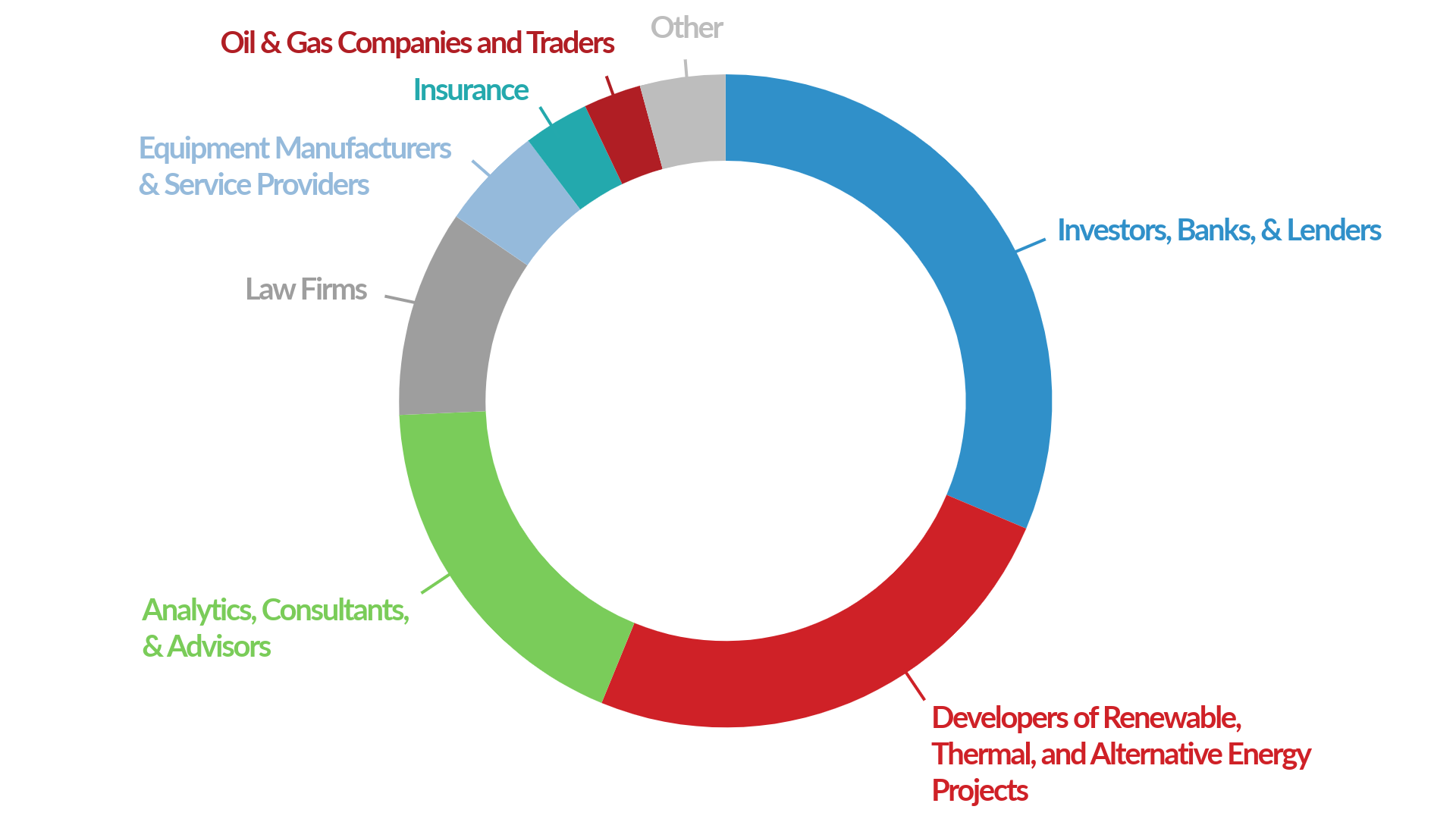
October 21 - 23, 2025 | C. Baldwin Curio Collection by Hilton | Houston, TX

October 21 - 23, 2025 | C. Baldwin Curio Collection by Hilton | Houston, TX
American innovation is transforming the U.S. energy market, reshaping supply, demand, pricing, and investment. Breakthroughs across conventional and clean energy technologies are driving a more dynamic, decentralized, and diversified energy mix, positioning the U.S. to achieve true energy independence. These changes have already delivered over $115 billion in investment, 3.5 million jobs, and enough new capacity to power 170 million homes in just the past year. With electricity demand surging, fueled by AI, electrification, and data infrastructure, a resilient, domestically powered grid will be essential to stabilizing markets, reducing price volatility, and managing global risks.
At the same time, there is growing recognition that the conversation around clean energy deployment must shift from ambition to execution. To meet escalating energy demands, conventional and clean energy asset development must be aligned with realistic economic, technical, and market-based goals. Siting, interconnection, permitting, supply chains, and capital allocation must be addressed in practical terms—factoring in costs, scalability, timing, and regional grid needs. Markets must move beyond headline capacity targets and toward integrated planning that ensures new assets can be financed, built, and brought online when and where they’re needed most.
As the industry faces new deployment urgency The One Big Beautiful Bill Act (OBBBA) introduced significant changes to key clean energy incentives, and the market is scrambling to adjust project pipelines, capital stacks, and development timelines to meet new deadlines and compliance requirements. Uncertainty around trade, tariffs, and permitting reform is further complicating timelines. Developers, financiers, and suppliers are under intense pressure to make near-term decisions with long-term consequences—often without clear regulatory guidance or price stability. Every electron counts in the race to meet today's load growth, and the industry needs realistic conversations surrounding how we get there using any bankable asset type. The future grid must be an all of the above approach and now is the time to pivot plans and priorities in order to be effective.
This is a pivotal moment. The energy market is being reshaped in real time, and the window to make informed, strategic moves is closing fast. Now is the time to step away from reactive mode and engage with the full market picture.
Infocast’s inaugural Energy Independence Summit is uniquely positioned to meet this critical moment. By convening top leaders across energy, finance, and policy, the Summit provides a timely platform to cut through the noise and evaluate where the market is headed next. Attendees will gain critical insights into how capital is being deployed, which technologies and projects are emerging as the most viable under OBBBA, how domestic supply chains are affecting costs and timelines, and what regulatory levers may help stabilize the sector.
This is more than a conference; it’s a strategic reset. In a market under pressure and in flux, this is where clarity meets opportunity.
Get insights you won’t find elsewhere into what it will take to deploy, scale, finance and profit from energy projects and technologies in today’s climate.
✅ Analyze how projects across energy subsectors are being funded, financed, and transacted in the face of OBBBA’s changes to tax credits, shortened construction timelines, FEOC requirements, and the impacts of multinational tariffs.
✅ Get a comprehensive breakdown of the new rules for tax equity and tax credit markets, highlighting how updated contract structures are supporting project execution, catalyzing U.S. energy independence.
✅ Examine the drivers for energy generation independence: Understand how global pricing, domestic manufacturing, and commodities support the transition to a domestic energy future.
✅ Hear directly from top energy infrastructure capital, private, debt and tax equity investors, and leading developers across energy sources on how they are finding certainties in today’s political and economic landscape.
✅ Grasp the scale of today’s unprecedented load growth and what’s needed for deploying grid modernization, generation additions, and the timelines to energization necessary to achieve U.S. energy independence goals.
✅ Strategize with leaders directly engaged in the AI and data center expansion on the approaches needed to meet and power the U.S.’ ever-growing energy demand.
Did you Attend These Events?

Energy Independence Summit transforms the insights, strategies, and dialogue from those programs to meet today’s fast-changing regulatory and market landscape—so you stay ahead of the curve.
Hear from top industry leaders
and market stakeholders
Gain highly-relevant,
exclusive insights and updates
Connect with key decision-makers
and get deals done
Get visibility for your brand
Sponsor this Event
Contact Sponsorship
sponsorship@infocastevents.com
For registration questions
Group rates available,
for 3 or more attendees!
registration@infocastevents.com
Share your expertise
James Riley
Conference Producer
jamesr@infocastevents.com
10/21/2025, Tuesday
SUMMIT DAY 1:
The Current State of the US Economy, Policy & Incentives for Energy Independence
Defining Drivers for Energy Generation Independence: Global Pricing, Domestic Manufacturing & Commodities
Impacts of Changing Federal Policy & Regulation on Investment Strategies for Today's Energy Projects
Macroeconomics of Domestic Energy Independence and their Effects on the Markets
Presentation: Change in Law Risk
Meeting Demand Growth: Onshoring Power for Next Gen Hyperscalers, AI, & Other Large Energy Customers
Today’s Outlook on Domestic Fossil Fuel Production: Market Shifts, Export Momentum, and Power Price Pressures
Presentation: Power Market Analysis
OBBBA & Energy Independence: Implications of the Tax Equity & Credit Markets on US Investments
10/22/2025, Wednesday
SUMMIT DAY 2:
How the Push for Energy Independence Affects Investment Decisions
Investor Perspectives on Evaluating Emerging Clean Energy Technologies
Monetization Outlook: Timelines for Commercial Scale-Up Across Next Gen Energy Technologies
New Developments in Corporate Level Financing/Debt
Presentation: ROI Timelines in Asset Investment
Opportunities in US Manufacturing: How Big, How Fast, How FEOC?
Opportunities in Next-Gen Energy Hardware/Software & Clean Tech
Balancing Emissions Goals and Energy Independence: The Carbon Capture Equation
Cornerstones for Energy Independence: Investing in Grid Security & Cybersecurity
10/23/2025, Thursday
SUMMIT DAY 3:
Energy Project Development Execution - Planning for Tomorrow's Energy Resource
Generation Mix Needed for Resilience & Keeping Up with Load Growth
Presentation: Understanding Today’s Energy Demands Using Technology
Large Scale Solar & Wind Deployment: Maximizing Execution Strategies & Finding Pockets of Certainty
Opportunities in Storage: BESS Revenue Models & Financing, and Prospects for Non-Lithium Ion Technologies
Prospects for Geothermal, Nuclear & Other Firming Technologies
How Natural Gas Fuels National Energy Independence Progress
Grid Resilience & Decentralization: How Distributed Generation Resources Ticks Two Boxes
Enhancing Energy Infrastructure Through Smart Grid Technologies
FEATURED SPEAKERS
)

)
WHY ATTEND?

Unmatched Insights from
Industry Leaders
 In-Depth Look at the Shifting Policy & Incentive Landscape
In-Depth Look at the Shifting Policy & Incentive Landscape
 Actionable Investment & Project Development Strategies
Actionable Investment & Project Development Strategies

Prime Networking with Key Decision-Makers & Deal-Making Opportunities

Comprehensive Roadmap
to U.S. Energy Autonomy

Assessments on the various asset types needed to meet AI-driven load growth
PAST PARTICIPATING ORGANIZATIONS AT SIMILAR INFOCAST EVENTS

WHO SHOULD ATTEND?
Clean Energy & Storage Project Developers
Fossil Fuel, Alt Fuel & Hydrogen Developers
CCUS, Clean Transportation & Other Developers
Financiers, Debt & Capital Providers
Infrastructure, Equity & Tax Equity Investors
Alternative Investors, VCs & Asset Management Funds
Data Centers & Other Large Energy Users
Carbon-intensive Energy Companies & Industrials
Generation Facility Owner/Operators
EPCs, Construction Services,
Equipment Manufacturers & Providers
Clean Tech Companies & Other Service Providers
Consultants & Analysts
Government Agencies & Regulators
Law Firms
Insurance Providers
HEAR FROM INDUSTRY LEADERS & EXPERTS
venue



C. Baldwin, Curio Collection by Hilton
400 Dallas Street
Houston, TX 77002
Phone: (713) 759-0202
WARNING: Please do not book any guest rooms with third-party housing companies for this event. Infocast does not partner with outside housing companies, so we advise that you only book guest rooms directly through the venue using the details provided above.
sponsors
SUPPORTING ORGANIZATIONS
Looking for more information about this or upcoming events?
Please fill out the form below.
)